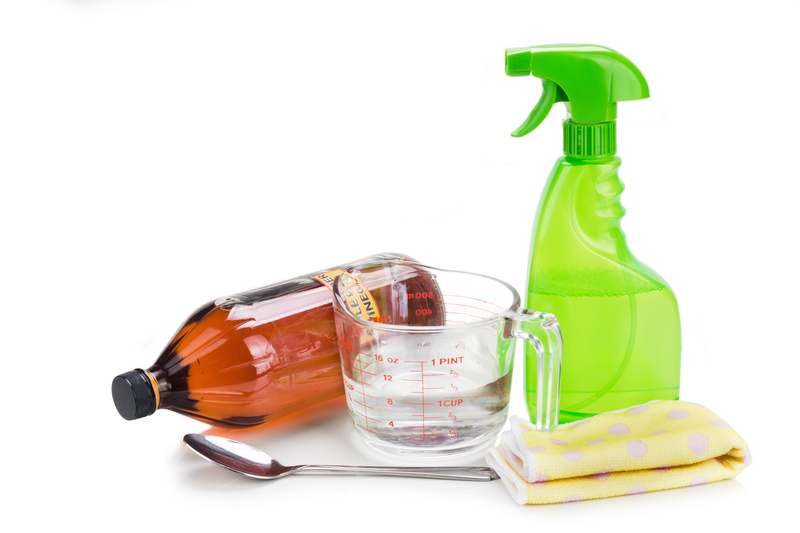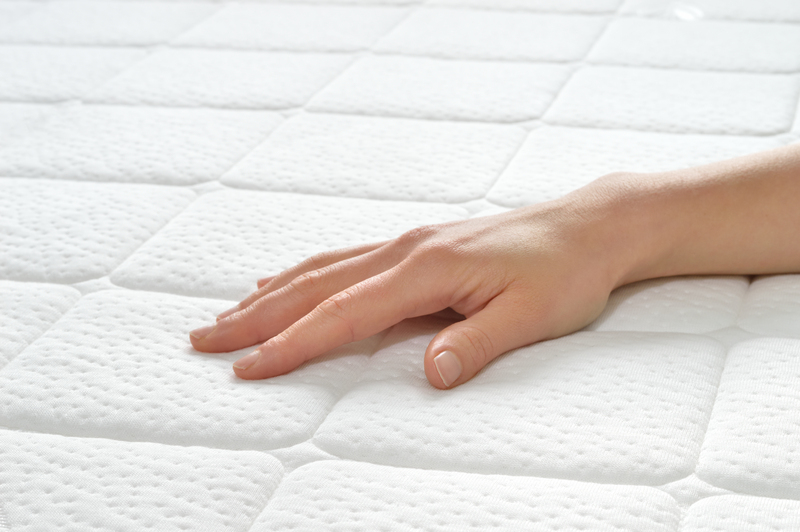The Art of Cleaning Mold from Window Sills
Posted on 19/06/2025
The Art of Cleaning Mold from Window Sills: A Complete Guide
Mold on window sills isn't just an eyesore; it can also create health risks and damage your property if left unchecked. When it comes to the art of cleaning mold from window sills, there's much more to it than grabbing a paper towel and wiping the fungus away. With the right techniques, tools, and preventative measures, you can ensure your windowsills stay clean and healthy for years to come.
Why Does Mold Grow on Window Sills?
Before we dive into removing mold from window sills, let's first understand why you might find this unwelcome guest. Mold loves to grow in damp, dark, and humid environments. Window sills often fall victim to these conditions due to condensation, poor insulation, or leaks.
- Condensation: Windows are natural magnets for moisture, especially in older homes or areas with significant temperature differences.
- Leaky Windows: Improperly sealed windows can allow rainwater and other sources of moisture to infiltrate.
- Poor Ventilation: Rooms without adequate airflow can trap humidity, creating the perfect breeding ground for mold.
- Organic Material: Dust, dirt, and wooden sills provide molds with the food they need to thrive.
Recognizing and addressing these causes is key to effective window sill mold control.

Health Risks Associated with Moldy Window Sills
Mold exposure can lead to a variety of problems, particularly for people with allergies, asthma, or weakened immune systems. Common health effects include:
- Respiratory Issues: Wheezing, coughing, and shortness of breath.
- Eye, Nose, and Throat Irritation: Red, itchy eyes, nasal congestion, and sore throat.
- Skin Reactions: Rashes or irritation after contact with moldy surfaces.
- Headaches: Prolonged exposure can also trigger headaches and fatigue.
These risks underline the importance of proper window mold removal to maintain a healthy living environment.
How to Identify Mold on Window Sills
Knowing how to spot mold early on your window frames is the first step toward successful cleaning. Mold appears as:
- Black, green, or even orange specks or patches.
- A musty odor around your windows.
- Peeling paint, soft wood, or crumbling caulk where moisture has penetrated.
Use a flashlight to check beneath the edges and corners of your sills for hidden mold colonies. If you identify a mold problem, act quickly to avoid its spread and minimize damage to your window sills.
The Art of Cleaning Mold from Window Sills: Step-by-Step
Tackling a moldy window sill requires care and attention. Follow these steps for thorough and safe mold remediation:
1. Gather the Right Supplies
Before you remove mold from window sills, be sure to assemble:
- Protective gloves and goggles
- Mask (N95 or better)
- Bottle of distilled white vinegar or hydrogen peroxide (3% solution)
- Spray bottle
- Soft-bristle brush or old toothbrush
- Disposable sponge or cleaning cloth
- Baking soda (optional, for stubborn stains)
- Paper towels
- Trash bag
2. Prepare the Area
- Open windows to improve ventilation and reduce inhalation risks while you clean mold from window sills.
- Lay an old towel or plastic sheet beneath the window to catch drips and debris.
- Remove blinds or curtains near the sill to prevent contamination.
3. Apply a Cleaning Solution
There are several effective natural and commercial cleaners:
- Distilled white vinegar: Pour into a spray bottle and apply liberally to the moldy areas. Vinegar kills up to 82% of mold species.
- Hydrogen peroxide: Perfect for light-colored sills, as it disinfects and bleaches stains. Spray and let sit for 10 minutes.
- Avoid bleach: Strong chemicals like bleach can harm wooden window sills and may not penetrate porous surfaces. Instead, use the safer options above whenever possible.
4. Scrub the Mold Away
- With a soft-bristle brush or toothbrush, gently scrub the moldy area until the patches lift.
- For deeper mold stains, sprinkle baking soda on the brush for added grit.
- Repeat the spray and scrub process as needed.
5. Clean and Dry the Window Sill
Wipe away any residue with a disposable sponge, then run over the area with clean water and a fresh cloth. Dry the sill thoroughly with paper towels--mold can return quickly if moisture is left behind.
6. Dispose of Contaminated Materials
Immediately place used towels, sponges, and gloves in a trash bag and seal tightly. Wash or disinfect any reusable brushes or cloths. This step is crucial to prevent spreading mold spores around your home!
Preventing Mold from Returning to Your Window Sills
Once you have cleaned mold from your window sills, prevention becomes the next priority. Here's how to keep your sills spotless and healthy:
Control Moisture and Humidity
- Use a dehumidifier in damp rooms to maintain indoor humidity below 50%.
- Ensure windows are properly sealed and caulked.
- Open windows for 10-15 minutes daily to improve circulation, especially after showers or cooking.
Improve Window Insulation
- Install double-glazed windows to reduce condensation.
- Add weather-stripping or window insulation kits during colder months.
Keep Sills Clean
- Dust and wipe sills weekly to remove organic debris that mold feeds on.
- Avoid leaving potted plants, wet towels, or drinks on sills.
Monitor for Leaks
- Check windows regularly for signs of water stains, soft wood, or bubbling paint.
- Repair or replace damaged caulking and window frames as soon as possible.
Regular maintenance forms the backbone of effective mold prevention on window sills.
Natural vs. Chemical Mold Cleaners: What's Best for Window Sills?
When considering best practices for eliminating window sill mold, homeowners are often torn between natural and chemical-based cleaners. Here's a quick comparison:
- Natural Cleaners (Vinegar, Hydrogen Peroxide, Baking Soda):
- Safe for most surfaces, including wood and vinyl.
- No toxic fumes.
- Effective for light to moderate infestations.
- Chemical Cleaners (Bleach, Commercial Mold Removers):
- May quickly bleach mold stains, but can be harsh and damaging.
- Unsuitable for porous materials where mold roots can persist below the surface.
- Fumes can irritate eyes and airways.
For most homeowners, natural cleaners are the preferred choice for regular cleaning and mold removal on window sills.
Dealing with Stubborn or Recurring Mold on Window Sills
Occasionally, you may face persistent mold on window sills that resists standard cleaning or keeps coming back even after removal. This often points to an underlying structural issue.
- Hidden leaks: Water may be entering through unseen cracks or roof problems.
- Severe condensation: Poor insulation or single-pane windows may be the culprit.
- Mold in wall cavities: Sometimes, window mold is just a symptom of a larger hidden infestation.
For these cases, it's wise to:
- Contact a professional mold remediation service for a thorough inspection.
- Consider upgrading window units or improving insulation.
- Address any moisture or structural issues before finishing the cleaning process.
Prompt action prevents more severe damage--and potential health hazards down the line.
Tips for Different Window Sill Materials
Not all window sills are created equal. Cleaning techniques vary depending on the sill material:
- Wood: Use minimal water. After cleaning, sand lightly if needed, and consider sealing or repainting to protect the wood.
- Vinyl or Aluminum: These sills tolerate more water and stronger cleaners. Still, always rinse thoroughly to prevent residue buildup.
- Painted or Stained Sills: Test cleaners in an inconspicuous area first to ensure they don't cause fading or peeling.
Choose gentle, non-abrasive cleaning tools to avoid scratching or damaging your window sills.

When to Replace Your Window Sills Due to Mold
In some severe cases, window sill mold remediation may not be enough. Consider replacing your window sills if:
- Mold has penetrated deeply, with wood feeling spongy or crumbling
- Extensive black spots remain despite multiple cleanings
- There's a persistent musty smell after all visible mold is removed
- The underlying wall or window frame is also showing signs of decay
New window sills, installed with proper moisture protection, will improve both your home's value and your family's health.
Conclusion: Mastering the Art of Cleaning Mold from Window Sills
By following these expert-backed steps, you can master the art of cleaning mold from window sills and maintain a safe, beautiful home. Remember:
- Act quickly at the first sign of mold.
- Use safe, effective cleaning solutions and proper protective gear.
- Address and prevent moisture issues to stop mold from returning.
- Consult professionals if you face recurring problems or structural issues.
Clean, mold-free window sills not only enhance the look of your rooms, but also protect your health and your property. Don't let mold take root--fight back with these robust techniques! For ongoing tips and guidance on home maintenance, be sure to bookmark this guide to the art of window sill mold cleaning.




